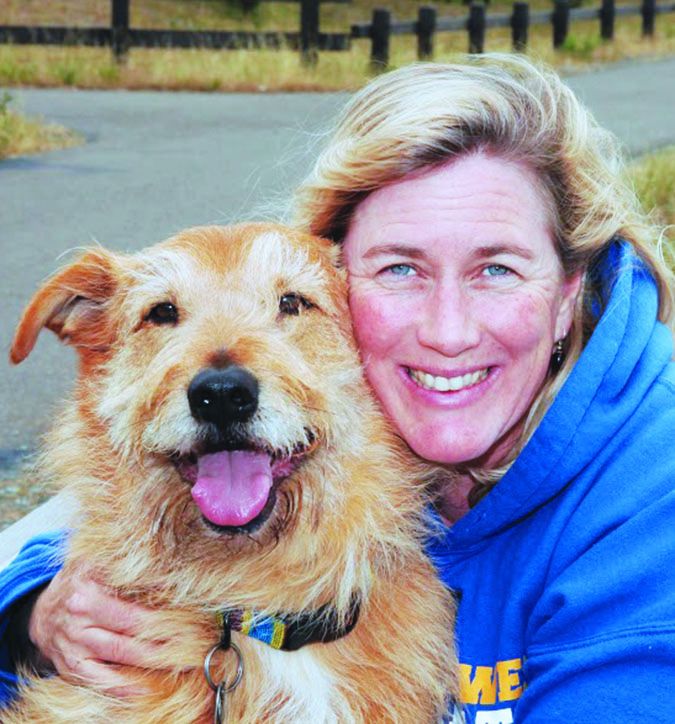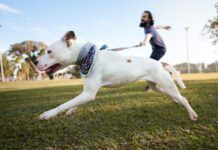Last month, in this space, I mentioned a big Labrador I was working with at my local shelter. (That’s him on the back cover, only it doesn’t look like him, because he’s squinting in happiness with his giant rawhide bone, and he has nice big eyes, not piggy squinty eyes. But anyway.) The handsome boy, estimated at about 18 months old, came into the shelter as a stray, picked up by animal control. He lingered in the isolation ward for a couple of weeks; despite his good looks and sweet disposition, no one came looking for him.

288
He’s amiable, and takes no offense from other dogs at all, even if they pummel him out of irritation with his physical clumsiness – which happens all the time, both the clumsiness and the pummelling. So he was moved to the adoption ward, where he lingered some more. Why?
For several reasons. Mostly, because this beautiful, friendly dog behaved like a canine tornado. If he walked through a room, it left a trace: things knocked over, drops of the water he just drank left on the floor in a drunken trail, people rubbing their shins (tail whacks) or flip-flopped feet (he didn’t seem to understand that human feet are not there to give him traction). Oh, and the barking! Have you ever met a dog with the kind of bark that is not just loud, it’s painful? That’s this guy.
So, quickly, he got a reputation at the shelter, for being a nut, a spazz, hyperactive. He was given the name “Rowdy.” While everyone recognized that he was sweet, they felt he was stupid. All of his panting and thrashing reinforced this perception.
As I worked with him, however, I realized a few things. He was actually really smart. He learned what I wanted him to do very quickly, but lacked the self-control to do it for very long. And he wasn’t truly hyperactive, although it seemed that way because he is big and uncoordinated. When I came to the shelter early, before the back gates were open to the animal control trucks, I’d let him loose in the several-acre fenced area around the shelter, to see if he wanted to run; he didn’t! He’d run a bit, but then walk around with me.
I came to realize that his writhing and flopping were symptoms of anxiety. Every time I took him into a new setting (like, each different section or room inside the shelter), he reacted with panting and physical exuberance. But as soon as he was comfortable in the new place, and knew what I wanted him to do (mainly, sit!), he would grow calm.
Long story short: I brought him home for a few weeks of training, but more importantly, socialization. I constantly asked him to control himself – Sit! – and reinforced any success richly, with attention, eye contact, calm petting, and food treats. Fetch? Sure! But he had to sit each time before I threw the ball. Go in or out of the house or car? Absolutely, but say “Please” first with a sit. If he grew frantic about anything, I’d ignore him, walk or look away, and pay attention to him only when he was calm again.
And, importantly, I changed his story;
I didn’t allow him to be “Rowdy.” When I took him places,
I didn’t space out. I scrupulously managed his interactions with people so that he always succeeded at behaving well; if any situation developed that looked like it might become too challenging for him (say, an out-of-control dog on a leash coming toward us), I calmly but quickly whisked him to a safe distance, asked him to sit, and reinforced him for observing the situation calmly. People remarked again and again (in Tractor Supply and Home Depot and on the street), at how smart and calm he was. Ha! He is!
He’s adopted now, and I’m working with his new family, to make sure that he continues to progress in his new life – a life of Riley, not Rowdy.






